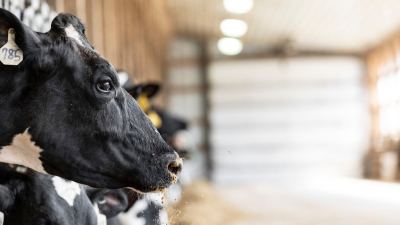Four practical approaches to managing udder health, combating mastitis

With the 2016 Central Plains Dairy Expo kicking off this week in Sioux Falls, South Dakota, we are gearing up for a unique educational experience. Dr. Roger Scaletti, Alltech North America Mineral Management team technical sales and support, and Tom Lorenzen, Alltech on-farm specialist, will be teaming up for an udder health workshop, helping producers take an inside look at udder health and milk quality.
Scaletti and Lorenzen plan to give producers four key practical approaches to managing udder health and combating mastitis:
Environment
The environment that your cattle are housed in can play a major role in poor milk quality. Are your cows housed in a mastitis-infected yard, or are they in a well-ventilated dry area, with minimal contact to some of the key mastitis-causing bacteria? While udder health management is important in preventing cases of mastitis, it is also important to understand how the disease travels through the udder. According to Scaletti, it’s a process beginning with the bacteria first entering the gland, multiplying, evading host defenses and finally damaging the host. Cases of mastitis can be both clinical or subclinical and contagious or environmental.
Know your enemy
“If you cannot measure it, you cannot control it. If you cannot control it, you cannot manage it.”
These words of advice from Lorenzen ring true. Whether culturing quarters individually or utilizing a California Mastitis Test (CMT), getting an understanding of what bacteria or what quarters you are dealing with is key. To find out what type of mastitis cows are infected with, Scaletti suggests culturing milk or using a DNA test. This quick test, which only takes four hours, can examine the bulk tank or individual cows, and producers can use the same sample as collected for somatic cell count (SCC). The test can be customized to report only contagious pathogens, or you can request the full panel of pathogens that can be detected. Running a culture on infected quarters can be beneficial in understanding what specific bacteria you are fighting, and what specific treatment to which that particular bacteria will respond.
Feeding program
Nutrition and the use of organic trace minerals can play a key role in milk quality as well as managing infections before they even occur. Nutrition has been linked to improving immune function and reducing mastitis. Selenium for strong antioxidant phagocytic cells, zinc for the integrity of skin and copper for neutrophil production and antibody development are a few of the more important trace minerals involved in immune function. Alltech has committed over 30 years to research in mineral nutrition as well as formulating technologies that meet herds’ needs while safeguarding them from potential risks.
Minerals: Form vs. function
While some might argue for more inorganic minerals in the ration, Scaletti said it is important to consider bioavailability, mineral interactions and environmental concerns. A trace mineral chelated to amino acids or peptides offers higher bioavailability and supports the animal’s natural defense system. In addition to organic mineral research, Scaletti also highlighted the importance of keeping the cow’s selenium status in check. In one recent Florida study, researchers found cows fed organic selenium had 100,000+ lower SCC than those fed sodium selenite.















